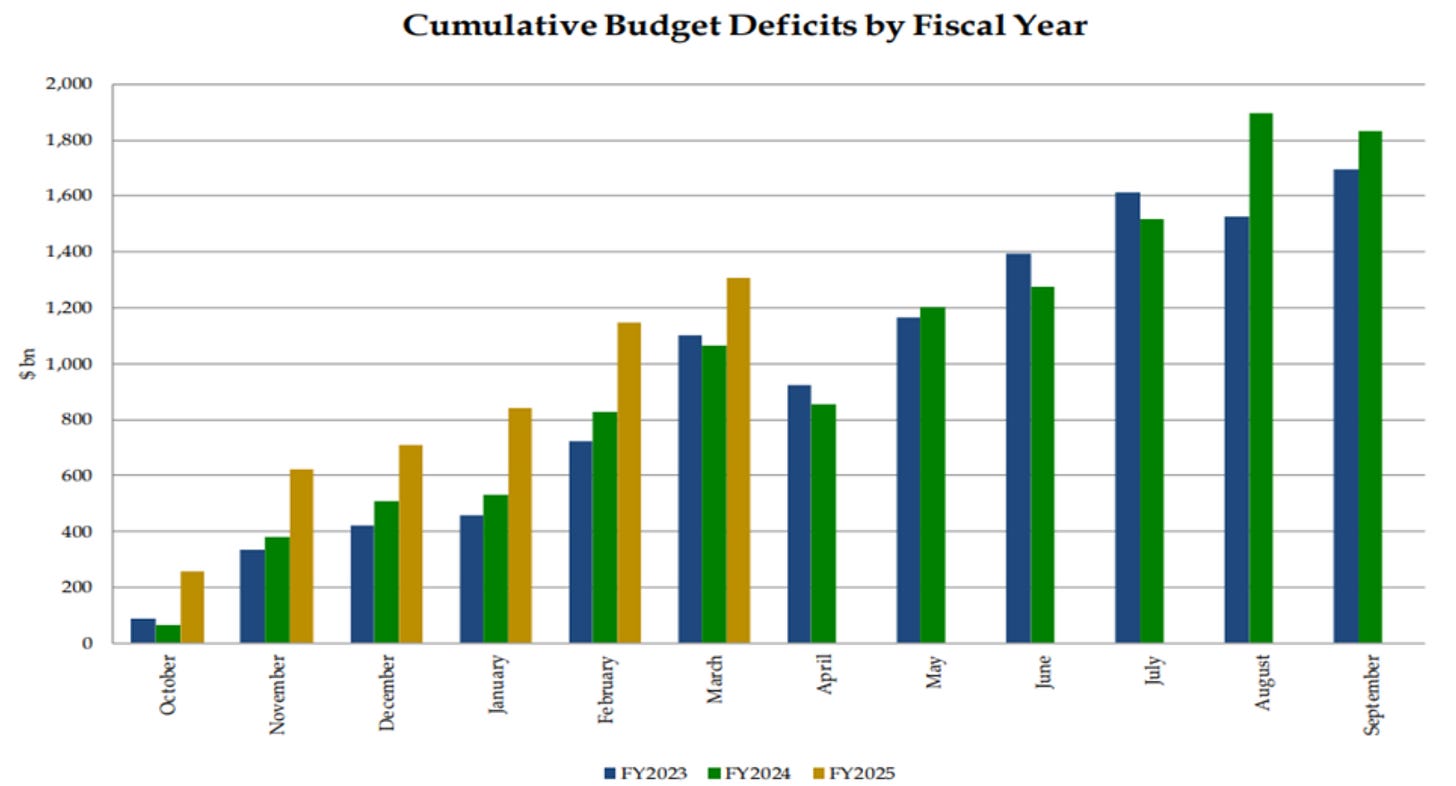A Rational Bill?
US stocks rose on Tuesday, lifted by tech strength, solid labor data, and hopes for progress on trade.
The S&P 500 rose 0.6%, the Dow gained 214 points, and the Nasdaq advanced 0.8%, led by a 2.8% rally in Nvidia that briefly made it the most valuable publicly traded company.
A stronger-than-expected JOLTS report showed job openings rose by 191,000 to 7.391 million in April, signalling resilience in the labour market despite trade headwinds.
Still, the OECD cut its 2025 US growth forecast to 1.6% from 2.2%, citing policy uncertainty and ongoing tariff tensions.
Beijing and Washington exchanged accusations of violating a trade truce, while Trump’s plan to double steel and aluminium tariffs drew EU criticism.
Yesterday, we talked about the Fed's influence on the budget deficit.
The Fed continues to hold rates up (135 basis points above the neutral rate), despite inflation falling back to just a tenth of a percentage point from its target.
On $36 trillion national debt, every percentage point, in excess of the interest rate necessary to keep prices stable and employment full, is unnecessarily costing the country hundreds of billions of dollars in interest (this year!).
Let's take a closer look at the budget itself. I asked three of the most advanced AI models to review the 1,038 page House approved "One Big Beautiful Bill Act."
Here's what each concluded ...
OpenAI's ChatGPT o4-mini: "When you subtract everything the bill 'un-funds' from what remains, the overalfederal budgetet baseline is smaller than the current budget."
Google's Gemini 2.5: "The bill cuts deep into certain areas of federal spending (particularly climate and social programmes) and seeks to improve efficiency of existing programmes, intending to create a net reduction in overall federal expenditures relative to current law, even while re-prioritising and increasing spending in other sectors like defence and border security."
Anthropic's Claude Sonnet 4: "It's a mixed package that includes both spending cuts in social programmes and significant tax cuts, with the net effect being a substantial increase in deficits. The bill does cut some government programmes, but the tax reductions and defence spending increases more than offset these cuts, resulting in increased borrowing rather than overall fiscal restraint."
So, the OpenAi and Google models stepped through the thousand page document and see significant cuts, and no new appropriations resulting in reduced federal spending. Not the extravagant "deficit blowing" budget we're hearing about.
However, the Anthropic model sees it differently. How is that possible? It didn't actually read the bill.
When forced to reconcile its conclusion against the other models, it admitted that it "was relying on secondary sources" that "appear to have either misunderstood the bill or were providing misleading analysis." It read the news.
It's conclusion after analysing the legislation is that it's "a rational growth bill that cuts wasteful spending."
As Bessent has promoted along the way, the plan is to reduce the deficit and debt through growth – growing the denominator (deficit/gdp and debt/gdp).
So, what's all the fuss about, aside from the typical political gamesmanship?
It's about the climate agenda.
The globally coordinated climate agenda that was funded with trillions of dollars (globally), and was intended to transform the global economy and reshape the world order, is on the chopping block in this budget – at least the United States' participation in it.








